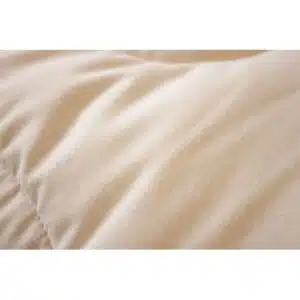After years of studying and planning and digging and weeding, we are very excited to have launched Field & Forage Yarn; yarn naturally dyed by fibre artist, Megan Samms, exclusively with raw plant materials grown, gathered, or salvaged from the local area. 18 colours coaxed from the earth through the slow processes of growth, harvest, and transformation. As much as it is a beautiful collection of yarn, Field & Forage is a study in the tradition and philosophy of colour.
It is easy to take colour for granted. When you look around the physical environment, you see it is full of things painted, dyed, stained, and printed a myriad of colours, but where does that colour come from?
Traditionally, colour was harvested from plants, trees, bugs, and other growing things. It was a slow process that required more than a little bit of patience and expertise, and conformed to the seasonal cycles of sowing, growth, death, and decomposition. Vibrant colours such as blues and reds where extremely rare and coveted - wars were fought for them - while others, such as yellows and greens, were relatively easy to obtain. Colour was used sparingly to decorate cherished items.
With the invention of synthetic dyes in 1856, all that changed. The challenging tradition of growing colour was abandoned as, with increasing ease, monetarily inexpensive, vibrant colours were synthesized and distributed to industries around the world. Quickly, the human environment was transformed to the one we know today - a world with blue houses and red cars. Yet, all that colour comes at significant environmental and social cost (costs we've written about before in our blog, Announcing the CWM Natural Dye Club 2017, so we won't get into them today).
Here at the mill, we spend a lot of time thinking about colour and, in honesty, we have a complicated relationship with it. Dyed colour at a wool mill is a necessary thing - no one wants to do all their knitting or crafting in natural sheep shades of white and grey only - but we feel concerned about the environmental and social impact of standard textile dyes. Even though we take great effort to source and use the least impactful synthetic dyes available, as we become increasingly aware of their far reaching consequences (even with many dyes accepted under 'organic certification'), we find ourselves searching for a different answer.
Field & Forage is the beginning of that search; a self immersion in the origins of dyed colour and a return to the basics where colour is part of an environmentally and socially ethical cycle. All of the dyes were either grown here at the mill or in the community under regenerative agriculture growing practices, gathered as invasive species from sensitive Alberta landscapes, or salvaged waste from other uses here in Alberta. It was created entirely, from fleece to dyed yarn, within the Alberta economic environment where people were payed a first-world living wage for their efforts.
On that note, at $36.00 per skein, you will find that Field & Forage yarn is not cheap. We hope you will find value in knowing the environmental and social cost of colour is more fully paid in the monetary price per skein, and we recommend that you cherish the colour and use it sparingly. It is a foundational principle at the mill that our products should be accessible to anyone in our society who wants to knit; we believe that, like food, environmentally and socially ethical, high quality textiles should not just be reserved for the weathly, and price has been a big concern for us throughout this process. However, when paired with our natural sheep shade yarns, we believe Field & Forage can bring an elegant detail of colour to a project that is, overall, still very affordable.
To those of you who have been following along and encouraging us in this project through visits to the mill and through social media - thanks! We hope you enjoy the end product as much as we have enjoyed the process.











